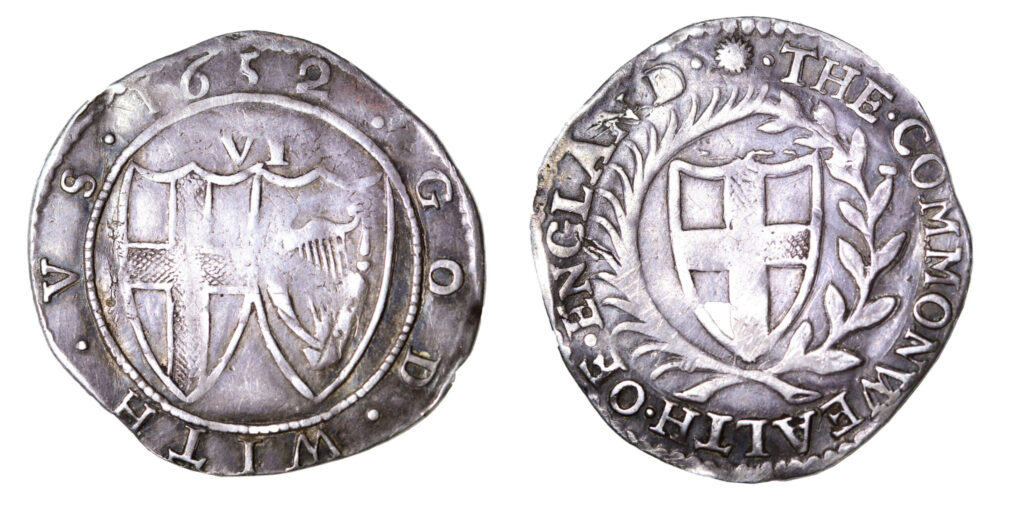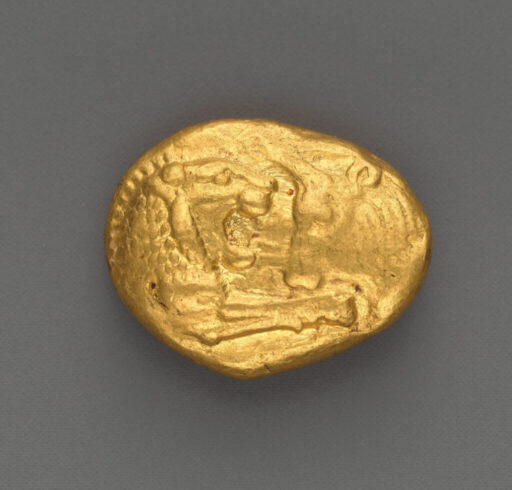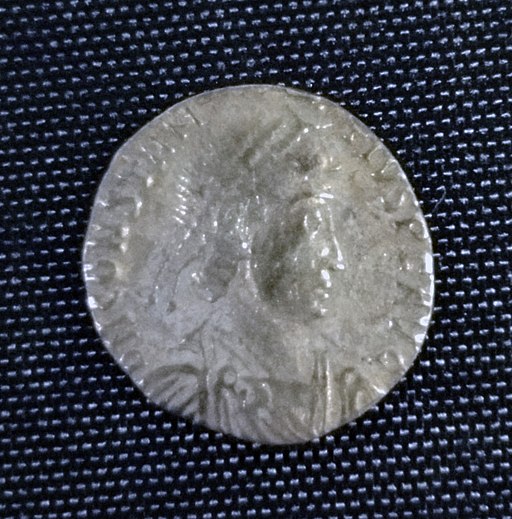When coins were made of silver and gold, the temptation to remove a slither was, for some, too great. Coin clipping was widespread in the 1600s despite carrying the death penalty.

It may be a surprise to learn that the loose change rattling in your pocket is worthless. Coins are made from cheap alloys, the material cost of which is far less than their face value. Up to the 17th century, the value of coins matched their gold and silver content, and they were ‘hammer struck’, producing an irregular shape which encouraged coin clipping – slicing off tiny amounts to melt down and sell.
The basics of coin clipping?
Coin clipping was the physical removal of small amounts of official gold and silver coinage to melt down for profit. It was a criminal act because it devalued the worth of coins which was measured by their gold or silver content aka ‘commodity money’.
Natural wear and tear meant that over the lifetime of a coin from the 1600s could end up being about 2/3s of its original size; coin clipping just sped that process up – dramatically.
Today it is difficult to grasp the concept of coin clipping because not only is coinage and physical money in general in steep decline, but the value of coins doesn’t correspond to the value of the metal content.
Modern coins are made from cheap metals like copper or are sandwiches, with outer layers of metal that look like silver – nickel or zinc – with copper in the middle.
When & where did coin clipping happen?
Coin clipping was prevalent throughout the era of commodity money but reached a peak as the use of coinage, and urban economies grew around the 17th century.

The Lydian Stater, issued under the reign of King Alyattes in the 7th century BCE, in what is modern-day Turkey, is believed to be the first coin produced by a governing authority. It was 55% gold and 45% silver with a small amount of electrum to give it a golden hue and became the template for coinage that quickly spread to facilitate trade.
The use of gold and silver in trade wasn’t new, it’s just that the Stater was the first attempt to standardise its use through coins, which then spread across Europe and parts of Asia.
The Roman Empire, covering much of Europe, Britain, North Africa and the Middle East, established a standard form of coinage which was originally made from silver and gold.
Roman coins were inevitably clipped, as shown by surviving coins from the Hoxne Hoard (see below), the largest surviving collection of Roman silver and gold discovered in Britain, which contained examples of unclipped, partially clipped and fully clipped silver Siliqua.
The Roman Empire collapsed around 500 AD, and given its influence, the use of money across Europe largely disappeared, taking centuries to recover.
When the use of commodity money recovered, so did its abuse, with the problem of coin clipping in England peaking in the 17th century.
The problem was so bad that England effectively ran out of money, leading to the recall and reissue of all coins in circulation – the Great Recoinage.
Different methods of coin clipping
The most obvious method of coin clipping was to use a pair of pliers or shears to slice off a small amount from the edge of a coin, then file it down to give a natural, abraded look. The clippings would then be melted down and sold to bullion dealers.
Coin Plugging
Rather than removing a portion at the edge of a coin, plugging removed a portion from the middle of the coin, replacing the silver with a much cheaper metal which was then hammered in to hide the process.
In his book Money and the Mechanisms of Exchange, W. Stanley Jevons describes one of the most complex methods for debasing American gold coins that was virtually undetectable.
a double eagle of the United States, actually sawn in two, the gold dug out of the inside and the two parts welded together, with a piece of platinum put into the cavity so as to bring the coin up to its true weight.
Money and the Mechanisms of Exchange, W. Stanley Jevons
Coin Sweating
Though coin sweating might sound like something you experience trying to find the money for a parking meter, it actually refers to a tactic of imitating natural erosion to pilfer a portion of the precious metal contained by coins.
Hammered coins of the Stuart era (and earlier) degraded through friction in purses, pockets or simply through constant usage. The process of abrasion inspired the enterprising criminals of the era to replicate the process through what was known as sweating.
Coins were placed in sacks and continually shaken. You might imagine boiler rooms of coin sweaters furiously shaking bags of coins day and night a bit like Dyson Testing Centre, except that wear and tear was engineered to create silver residue which could be sold for a profit without decreasing the face value of the coins.
What was the solution for coin clipping?
Coin clipping was possible because the minting process – Hammer Striking – produced irregular shapes that could hide the removal of portions of the coin.
Screw Presses which emerged in the 16th century provided a vast improvement to the slow and uneven hammer-struck approach but were resisted in France and England, where in 1551, the London Mint revolted against their use.
Screw presses were finally adopted around 1662, offering a solution to the problem of coin clipping because coins were not only uniform but had a distinct milled edge.
Improvements in the coin minting process
Coins were rotated over steel plates engraving an inscription into the rim of the coin ‘decus et tutamen‘ meaning a ‘decoration and a safeguard‘.
Dyes were also a crucial partner of the new minting process, producing a much deeper and distinct emblem imprinted on both sides of the coin.
The introduction of new minting technology ensured that new coins couldn’t be clipped and were harder to counterfeit.
However, this provided only a partial solution to England’s money problems, as all the debased coins in circulation had to be recovered and reissued.
In 1696, during the reign of William III, the English Parliament declared The Act for Remedying the Ill State of the Coin, aka the Great Recoinage.
£ 7 million of new coins were required, but that was going to take nine years to achieve at the prevailing rate of production when the target was to achieve that in three years.
Charles Montagu, Chancellor of the Exchequer, with the support of the King, enlisted the help of Isaac Newton, who was made Warden of the Mint on May 2nd 1696.
Netwon’s task was to improve the efficiency of the screw presses, turning out enough coins to satisfy demand while swearing an oath to protect the secrets of the new process.
“[You shall not] reveal or discover to any person or persons whatsoever the new Invention of Rounding the edges of money & making the edges of them….So help you God”
Newton and the Counterfeiters, Thomas Levenson
Using his superb analytical mind, Newton conducted an early form of time and motion study, soon realising that the use of human muscle power was restricting the minting output.
Newton’s solution was to add more furnaces to smelt greater quantities of silver, along with new rolling mills driven by horses.
What economic problems did coin clipping create?
By the time of England’s great recoinage, the problem was so bad that Victorian historian Lord Macauley reported that at its peak, only one coin in every two thousand was genuine1.
That scale of problem destroyed confidence in money and had a huge impact on the amount of tax taken in by the Treasury, which in turn financed William III’s desire to continue the seemingly endless war with France.
As a business, who would want to accept worthless coins and who’d be stupid enough to spend the few remaining genuine coins? It was an illustration of what is known as Gresham’s Law, where bad money drives out good.
The people are discontented to the utmost; many self-murders happen in small families for want. Should the least accident put the mob in action, no man can tell where it would end
Edmund Bohun, Licensor of the Press
Such concerns weren’t just doom-mongering; in Kendal, Cumbria, twenty people were arrested when a tax collector refused their clipped coins, and conspiracy theories circulated that William of Orange was part of a plot to siphon the nation’s money to his homeland, Holland.
What were the punishments for coin clipping?
Given the problems that it created, from Elizabethan times, counterfeiting or coin clipping was classed as treason and carried the death penalty.
Treason is defined as the betrayal of your country and monarch, the most serious of crimes. Given the monarch’s likeness was stamped on the coin, the act of coin clipping was seen as a direct attack on their authority and control over money.
Despite the most serious of consequences, coin clipping remained popular.
Why coin clipping persisted despite the threat of hanging
The threat of execution didn’t seem to be an effective deterrent to coin clipping, which persisted throughout the 1600s, gathering pace as the century closed. There were over 300 warrants issued for coin clipping in London in 1692.
One explanation for the persistence of coin clipping, despite its consequences, was the high probability of a small return but a low probability of ultimate ruin – death.
Propositions of this nature are described as having a Taleb distribution (after the author Nassim Nicholas Taleb).
Tis sadly known how common that mischievous crime of Counterfeiting, Clipping, and Filing of his Majesties Coin is become in most parts, to the great abuse of all good Subjects.
Judge at the Old Bailey Court in London, 1677
Coin clipping & the death penalty
With death alone seemingly insufficient to discourage acts of treason, like coin clipping, the means of execution was adapted for maximum deterrence.
The anticipation of death was purposely heightened by a process from the jail to the gallows. Under normal circumstances, victims would be permitted to get drunk as a means of blotting out the fear, but for traitors, this privilege could be withheld.
Those convicted of treason would be hung, but to make an example of special cases, they might be hung and quartered. This involved removing their bowels before they choked. Then, when they finally expired, which could take considerable time, they’d be chopped into four pieces, and their head would be presented to the King or Queen.
One of the most famous counterfeiters and coin clippers was William Chaloner; he was executed in 1699 at Tyburn – modern-day Marble Arch.
Chaloner arrived at the gallows stone-cold sober. He was, however, permitted to asphyxiate before being pulled to pieces.
Wealthy criminals would pay the executioner to pull their legs, which is where the English expression ‘pulling your leg’ comes from.
David Hartley, leader of the Cragg Vale Coiners was another notable coin clipper to be executed, hanged at ‘York Tyburn’ near York on 28 April 1770.
Was coin clipping free money?
Coin clipping is the earliest example of a salami slicing scam, the theft of tiny amounts of money so small that they might go unnoticed but which can add up over time to significant sums.
The logic would appear straightforward: clip off an imperceptible amount, play the long game, and those tiny clippings would eventually amount to a tidy sum.
The problem was that coin clipping became so widespread that it was obvious, and authorities went after anyone found with apparatus that suggested that they were clipping.
Not only that, but coin clippers had to find dealers willing to buy the proceeds, which exposed them to the risk of blackmail or spies from the Mint, whose job it was to police the abuse of money.
Coin clipping & the Cragg Valley Coiners
Despite the Great Recoinage introducting a new money stock in the early 1700s, there were remote parts of England where old coins remained in circulation.
This enabled exploits such as the Cragg Valley Coiners, where an entire community, driven to desperation by the impact of the Industrial Revolution, organised a coin-clipping operation in the late 1760s.
The story of the Cragg Valley Coiners was the inspiration for a BBC drama written by Shane Meadows called ‘The Gallows Pole‘ based on the novel of the same name written by Ben Myers and published in 2017.
FAQs
Coin clipping was the physical removal of small amounts of official gold and silver coinage to melt down for profit.
Coin clipping was achieved by shearing off small portions or filing down the coin edges. Related methods included ‘plugging’, replacing the centre of the coin with an alloy of similar weight, or sweating forced abrasion by shacking coins in a sack.
In England, coin clipping was a treasonable offence, so the punishment from the Elizabethan period onward was death by public execution.
From 1662 coins were rotated over steel plates, creating a milled edge, and engraving an inscription into the rim of the coin ‘decus et tutamen‘ meaning a ‘decoration and a safeguard‘. This made the removal of any part of the coin’s edge clearly noticeable.
No Free Lunch
There is no such thing as a free lunch, but if you’re hungry to find out why, we’re here to help.
You can learn the meaning and origin of the no free lunch concept, as well as the broader philosophy behind the idea that nothing can ever be regarded as free.
We look at our relationship with money and truth, examining all of the supposed shortcuts, life hacks and get-rich-quick schemes.



